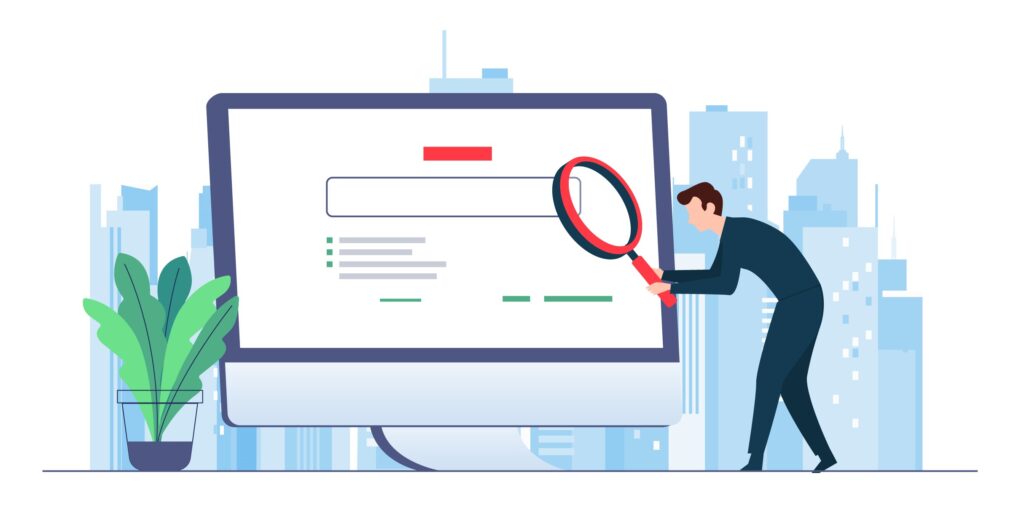If you’re a local business owner, chances are you’ve noticed just how important it is to be visible when people search for services or products nearby. In fact, studies show that nearly half of all Google searches have local intent. This means potential customers in your area are actively looking for what you offer, and if your business isn’t showing up in local search results, you might be missing out on valuable opportunities.
That’s where local SEO comes in. Optimizing your business for local search is the key to ensuring that when someone nearby looks for what you do, your business is the first one they see. Whether you’re running a small shop or a large enterprise with a local presence, local SEO tips can make a huge difference in getting noticed by nearby customers.
Let’s dive into the basics of local SEO and how you can make sure you’re not just another name in a crowded market. By mastering these techniques, you’ll be able to increase local visibility and rank higher in local search results, ultimately helping you attract more customers in your area.

1. Claim Your Google My Business Profile
One of the first and most important steps in optimizing your local SEO is to claim and complete your Google My Business (GMB) profile. This free tool from Google allows you to control how your business appears in local searches and on Google Maps. Without a properly set up GMB profile, your business might not even show up when people search for your services nearby.
Here’s what you need to do:
- Claim Your Listing: If you haven’t already, go to the Google My Business website and claim your business. You’ll need to verify your business, usually by receiving a postcard in the mail with a verification code.
- Complete Your Profile: Accurately fill in all the details, including your business name, address, phone number, hours, and website. Google values consistency, so make sure this information matches what’s on your website and other online listings.
- Add Photos and Updates: Businesses with photos receive 42% more requests for directions and 35% more click-throughs to their websites. Upload high-quality images of your store, products, services, or anything else that gives customers a glimpse into what to expect when they visit.
- Encourage Reviews: Customer reviews are essential for local SEO. Encourage happy customers to leave positive reviews on your GMB profile. Reviews improve your ranking and help build trust with potential customers.
Optimizing your Google My Business profile is an essential step to getting found on Google and increasing your chances of being featured in the local pack, that small group of businesses that appear at the top of local search results.
2. Focus on Local Keywords
When it comes to local business SEO, the right keywords are crucial. Keywords are the terms people type into search engines when looking for services. But for local SEO, it’s not just about generic keywords like “plumber” or “restaurant.” You need to target keywords that reflect your location.
For example, instead of just using “plumber,” try “plumber in [your city]” or “best plumber near me.” You can also use specific neighborhood names, nearby landmarks, or even zip codes to increase the relevance of your business in local searches.
Here’s how you can use local keywords effectively:
- On Your Website: Include local keywords in key areas like your page titles, headings, meta descriptions, and within the body of your content. Make sure it flows naturally and isn’t forced, as Google prioritizes content that provides value to readers.
- In Your Blog Posts: Write content that’s relevant to your community. For example, if you’re a bakery, you could write blog posts about local events, charity fundraisers, or community spotlights. These posts give you an opportunity to naturally integrate local keywords and show your connection to the area.
- In Your GMB Listing: Google uses the information in your GMB listing to determine how relevant you are to specific search queries. Include your location in your business description and services.
By targeting local keywords, you can better align your content with what people are searching for, and in turn, rank higher in local search results.
3. Optimize for Mobile Search
More and more people are searching for businesses on their smartphones. In fact, studies have shown that mobile searches have surpassed desktop searches, especially when it comes to local searches. This is why it’s essential to make sure your website is mobile-friendly.

Here’s how you can optimize your site for mobile users:
- Responsive Design: Ensure your website design adjusts automatically to different screen sizes. A responsive design makes your site look great and work well on all devices, from desktops to smartphones.
- Fast Load Times: Mobile users tend to have little patience for slow-loading websites. Google has made site speed a ranking factor, so it’s important to make sure your website loads quickly. You can use tools like Google PageSpeed Insights to check how fast your site is and get suggestions for improvement.
- Easy Navigation: Simplify your website’s navigation to make it easy for users to find what they’re looking for, whether that’s your address, phone number, menu, or store hours.
A mobile-optimized website isn’t just good for users; it’s also crucial for local business SEO since Google rewards mobile-friendly sites with higher rankings in local search results.
4. Get Listed in Local Directories
In addition to Google My Business, there are other online directories where your business should be listed. Websites like Yelp, Bing Places, and local chambers of commerce are great for improving your local SEO. When these sites list your business, it helps Google understand that you’re a legitimate business in your area.
Make sure your business is listed on as many reputable directories as possible. And, just like with your GMB profile, ensure your name, address, and phone number (NAP) are consistent across all listings.
5. Engage with Your Local Community
One often-overlooked aspect of SEO for small businesses is community engagement. Google loves businesses that are active in their communities, and this can have a big impact on your local SEO.
- Partner with Local Influencers or Bloggers: Collaborate with local influencers or bloggers who can write about your business or share your services with their audience.
- Host Local Events: Whether it’s a charity event, an in-store sale, or a workshop, hosting or participating in local events can help raise your profile and generate valuable local backlinks.
- Engage on Social Media: Connect with local customers and businesses on social platforms like Instagram, Facebook, and Twitter. By engaging in local conversations, you can increase your visibility and boost your SEO efforts.
6. Monitor and Improve Your Local SEO Performance
Finally, it’s essential to track the success of your local SEO efforts. Use tools like Google Analytics and Google Search Console to monitor your website traffic, keyword rankings, and user behavior. If certain keywords or pages aren’t performing well, adjust your strategy accordingly.
By consistently analyzing and improving your local SEO, you’ll stay ahead of your competition and keep your business visible to customers in your area.

Conclusion
Getting found by local customers requires more than just setting up a website; it requires a targeted approach to local SEO. From optimizing your Google My Business profile to focusing on local keywords, there are several strategies you can implement to ensure that your business appears when it matters most. By following these local SEO tips, you’ll be well on your way to improving your visibility and ranking higher in local search results.
With a little effort and persistence, you’ll not only get found on Google but also build a solid online presence that attracts customers from your local community. So go ahead, start implementing these tips, and watch your local business grow!